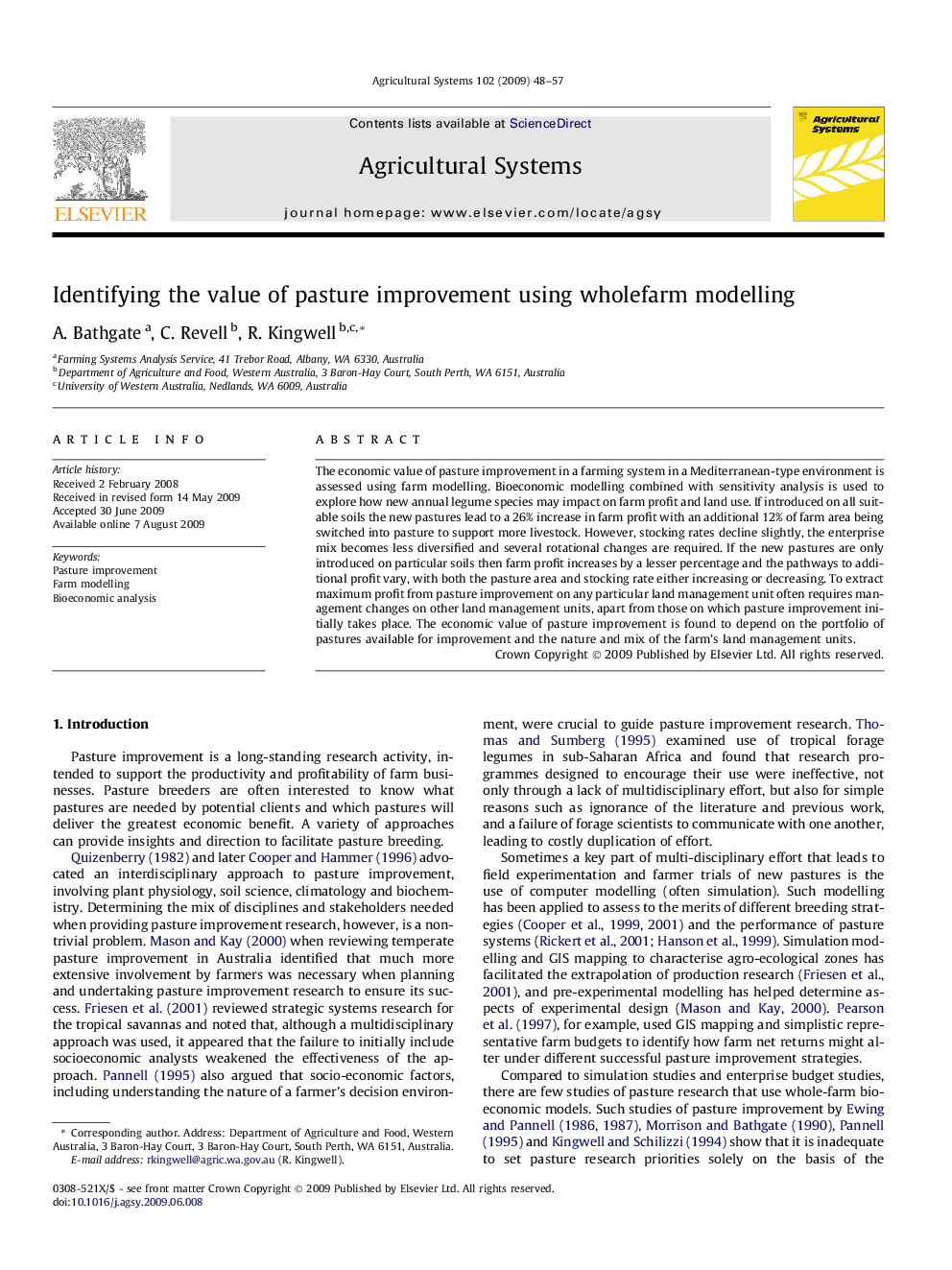| Article ID | Journal | Published Year | Pages | File Type |
|---|---|---|---|---|
| 4491692 | Agricultural Systems | 2009 | 10 Pages |
The economic value of pasture improvement in a farming system in a Mediterranean-type environment is assessed using farm modelling. Bioeconomic modelling combined with sensitivity analysis is used to explore how new annual legume species may impact on farm profit and land use. If introduced on all suitable soils the new pastures lead to a 26% increase in farm profit with an additional 12% of farm area being switched into pasture to support more livestock. However, stocking rates decline slightly, the enterprise mix becomes less diversified and several rotational changes are required. If the new pastures are only introduced on particular soils then farm profit increases by a lesser percentage and the pathways to additional profit vary, with both the pasture area and stocking rate either increasing or decreasing. To extract maximum profit from pasture improvement on any particular land management unit often requires management changes on other land management units, apart from those on which pasture improvement initially takes place. The economic value of pasture improvement is found to depend on the portfolio of pastures available for improvement and the nature and mix of the farm’s land management units.
